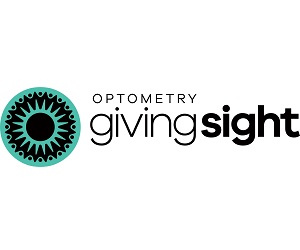
Dr Jennifer Stewart opened Performance 20/20 in 2016 to meet the needs of youth, recreational, elite, college and professional athletes in her area.
Sometimes the right second practice is not an optometric practice at all. But it’s made possible because of optometry.
This sounds a bit like a riddle, but it makes perfect sense to me. Two years ago, I opened Performance 20/20, a sports
training facility focusing on vision performance as a critical factor in sports performance. I divide my week between
one-two days at Performance 20/20 and three-fours days at Norwalk Eyecare in Norwalk, CT, where I have practiced as an
associate since 2008 and a partner since 2010.
This combines two loves of my life: training for and playing sports, and the joy of helping patients to see and perform better.
I still am passionate about providing primary care, but for me working with Performance 20/20 athletes—not patients—
along with a staff of sports trainers, completes the perfect picture. That, while training to run triathlons, and chasing after
two sons, aged 3 and 6.
Define your Purpose
Performance 20/20 allows me to apply my optometric training and clinical experience in vision perception toward improving
sports performance. But it is distinctly not an eyecare practice. There is no lane here, and instead of a white coat I’m in shorts
and a T-shirt.
Performance 20/20 is a sports training center where we help athletes to achieve full athletic potential by sharpening their
visual system and cognitive skills. Over 90 percent of the information we collect in sports is visual–so cognitive and
visual training is critical to improvement. We think of vision as what we see, but in sports vision it is what we perceive. It’s
about how we process visual information and what actions we take.
We’re not just training the eyes. We’re training our cognitive systems and motor systems to work better together. If you
can be faster at seeing sometime, processing it and making a better decision and action, you’re going to be a better athlete.

Our programs are designed to optimize visual acuity, sharpen coordination, maximize reaction times, increase peripheral
awareness, and expand depth perception. We utilize innovative training and technology to enhance the visual and cognitive
systems of all athletes ranging from youths to professionals. Our trainers will customize a sport specific plan to optimize
performance.
For the athletes we train and who recommend us to other athletes, we provide a unique sports vision training experience.
A Variety of Services
One key is to offer a variety of training options within a clearly defined pathway. We offer private, semi-private, and group
training sessions of up to 4-6 athletes at a time. We also work with teams and sports camps in larger group sessions.
In all of our services, we work in three steps:

ASSESS Establish a baseline.
We assess cognitive and motor skills and formulate a baseline to build from. We compare that baseline to their peers in sports skills and age groups.
ANALYZE Define purpose.
We ask the athlete: Why are you here? What do you want to achieve? With the baseline set, we can define goals in objective terms.
ACHIEVE Design a plan.
From this information, we can design a personalized improvement plan to achieve stated goals.

When we succeed in building cognitive skills and motors skills, we see enhanced performance. Athletes tell us that time
seems to slow down on the playing field. They are better able to concentrate and they make better decisions. Most of all, they
realize their performance has improved, and they enjoy playing the sports they love even more. It’s great to be
a part of that success.
Work in Free Space
One key to making rapid progress with athletes is to work in a free space where you can simulate their competitive
environment as realistically as possible. Unless you are training competitive computer gamers, conducting sports
vision training solely on a computer screen limits your ability to incorporate, for example,
exercises in movement and balance. With an open space, the athlete can move fully and naturally, as with the goalie pictured
here.

Further, an open space allows flexibility to set up sports-specific environments. We easily and readily can change
from ball game sports with targeted areas on walls, to skating, where training involves balance, focus and
concentration.
While we use computer screens, like the Senaptec Sensory Station, we have avoided mounting them on walls. Instead,
sturdy tripods provides the flexibility we need to set up for any sport.
Having said that, I know space is costly, I have colleagues who conduct training in a spare exam lane, but having more space
allows you to be creative.

Locate in a Sports Environment
From a business point of view, context and location are big contributors to our success.
When I was exploring a location for Performance 20/20, our real estate agent suggested Twin Rinks in Stamford, CT, a
mega-sports facility includes two NHL-regulation ice skating rinks and a host of training facilities. I had found a perfect
home. I rented a 700-square-foot space within a 10,000 square-foot facility that includes a strength and conditioning
center, a chiropractor, a physical therapist and many others.
The space is filled with athletes of all ages, from New York Rangers pro hockey players to youth sports. We have figure skaters on track for the Olympics, and lacrosse goalies looking to excel on their middle school teams.
Clear Windows Tell the Story
With our prime sports location, our windows help to tell the story. Kids and their families pass by and see athletes
working on visual training exercises, agility exercises, ball work on walls, etc.
They see the process and it generates interest. Many parents will poke their heads in to see what we do then schedule
individual or group sessions in coordination with practices and lessons their kids already have in the building.
Follow a dream
For me, Performance 20/20 fulfills a dream 10 years in the making. I ran Division 1 track and field in college, and I
continue to train for triathlons and road races.
In 2015, my husband and I took a leap of faith to follow our dream. He left his field of financial consulting to help me
plan and open Performance 20/20. We had a soft opening the following year and were in full swing by 2017. Today,
we have two to three sports trainers on board, and we have worked with youth, elite, college and professional athletes
in a wide variety of sports.
At the start, we built a “wish list” of equipment we wanted so as to be fully equipped. We soon saw that we didn’t need it all at once, that we could build as we go.
You truly can begin with just four empty walls and assortment of basketballs and tennis balls plus some charts commonly
used in vision training. Adding a system like the Senaptec Sensory Station is a big addition, but it can take your training
effectiveness up a notch.
We have looked at opening more locations, and our research indicates that we likely could do so in our same geographic
area. Choosing a site is sports-specific. Our first training center is located in a skating complex, and we work with a
lot of hockey players and figure skaters. We have looked at opening another center in a baseball training facility, where we
would have access to baseball, softball and lacrosse players.
It is important to note that referrals work both ways. I may mention to patients in my eyecare practice that I have a
sports vision training facility–but, more often, athletes training at Performance 20/20 or their parents will say, “Oh,
you’re an optometrist, can I come to you for an exam?” Many now do.
In sports and performance vision training, as in life, your passion drives your success. If you are doing something you
love and doing it to the fullest, good things happen.

JENNIFER STEWART, OD
is chief vision officer and founder of Performance 20/20, a sports and performance training facility in Stamford, CT.
Dr. Stewart is co-owner of Norwalk Eye Care in Norwalk, CT. She is a former Division 1 track and field athlete who still holds two college records. She is a competitive age group triathlete and competes in trail and road races. Dr. Stewart resides in Connecticut with her husband, who is an Ironman All World Triathlete, their two young boys, and their rescue dog.




















